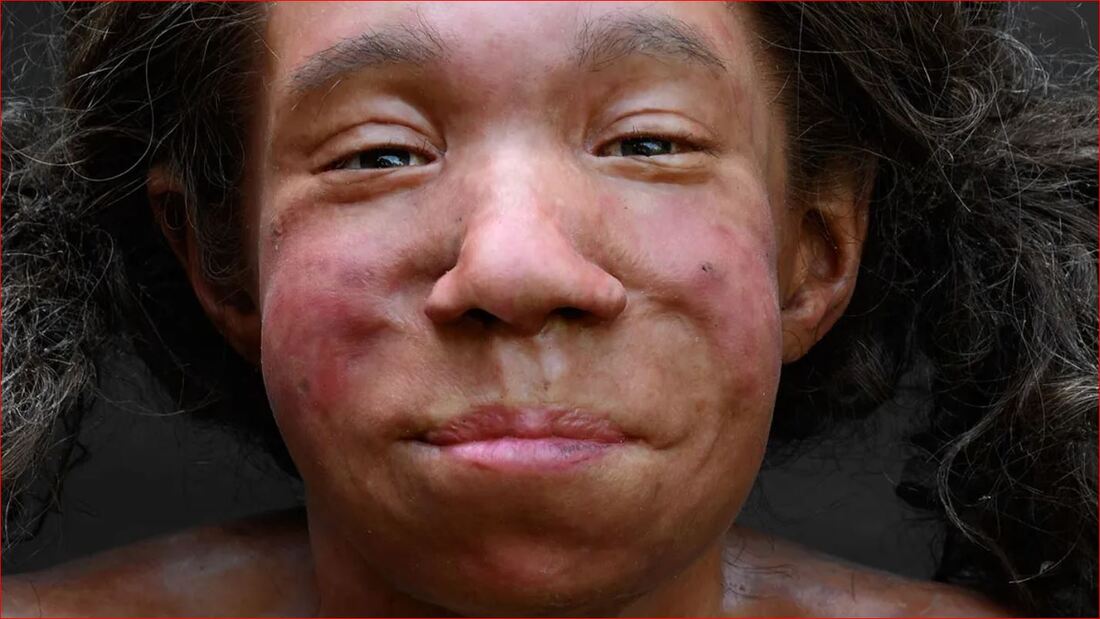Walking Humbly with our
Hominid Ancestors
four insights
Walking Humbly
with our hominid ancestors
four insights
Homo erectus is among the 20-25 species of human ancestors for which we have fossil remains. Members of this species thrived on Earth for around two million years whereas we, Homo sapiens, emerged only in the last three hundred thousand years.
Scientists speak of these various human species as hominins (with an "n"). You may be more familiar with the word "hominid," which is now used to name all of our ancestors, including others in the Great Ape family. Hence my use of the word "hominid" in the title.
Neanderthals are also hominins. They thrived throughout Europe and parts of Asia from about 400,000 until about 40,000 years ago. The image above is of a Neanderthal as depicted by the Smithsonian Museum of Natural History.
When we consider these different species of humanity, we rightly realize it is time to get over our sense of being uniquely human and to honor our larger extended family. We best walk humbly with our ancestors, knowing that they are together, biologically and spiritually. Think of it as deep humanism, itself enriched by a recognition that we are also kin to the whole of life. If we are religious, we rightly recognize that the divine lure toward creative survival and adaptivity was in other human species, too, and, for that matter, other forms of life.
This humble walk includes four insights. The first is that we as a unique species may not be all that adaptable. Witness our weaponry, our violence, our unsustainable practices. We may be much shorter lived than many of our hominin ancestor, becoming a memory for successor hominins who wonder how we could have been so short-sighted.
The second is a realization that God (the divine lure) works with human creatures, ourselves included, in a variety of ways, relative to their environments and potentialities within those environments. God is adaptable and omni-adaptive, adjusting to new situations, but God is not all-powerful.
The third insight stems from the second. It is a recognition and appreciation of differences within the human family (or genus, if you will.) Rather than speaking of "image" of God we might better speak of "images" of God. Let "image" refer to that aspect of an individual human being which is beautiful and rightly elicits respect and empathy. It is the subjective side of an individual's life, amid which he or she has intrinsic value. (See the article at the bottom of this page "The Secret Lives of Neanderthal Children.")
A fourth insight is to realize that species may not be meant to be everlasting. 99.9% of all the species that have existed on earth have gone extinct. The purpose of life, individually and collectively, is not to endure forever as a species, but to add something vital and beautiful to the ongoing life of the One in whose heart the universe lives and moves and has its being. We ought not make a fetish of collective survival, as if it were divine, What is divine is the ongoing history of the universe, with a Life of its own.
Walking humbly with our ancestors has, as its corollary, walking humbly with fellow Homo Sapiens. We honor different ways of being human, avoiding any single "image" of the divine image. And there's no reason to exclude other animals, too. They, too, carry God's image in their ways. Wherever there is subjectivity, there is something valuable an beautiful. Something divine.
The rest of this page offers opportunities for you to learn more about Homo Erectus, Neanderthals, and Human Evolution from gifted scholars. Enjoy!
- Jay McDaniel, 1/31/23







